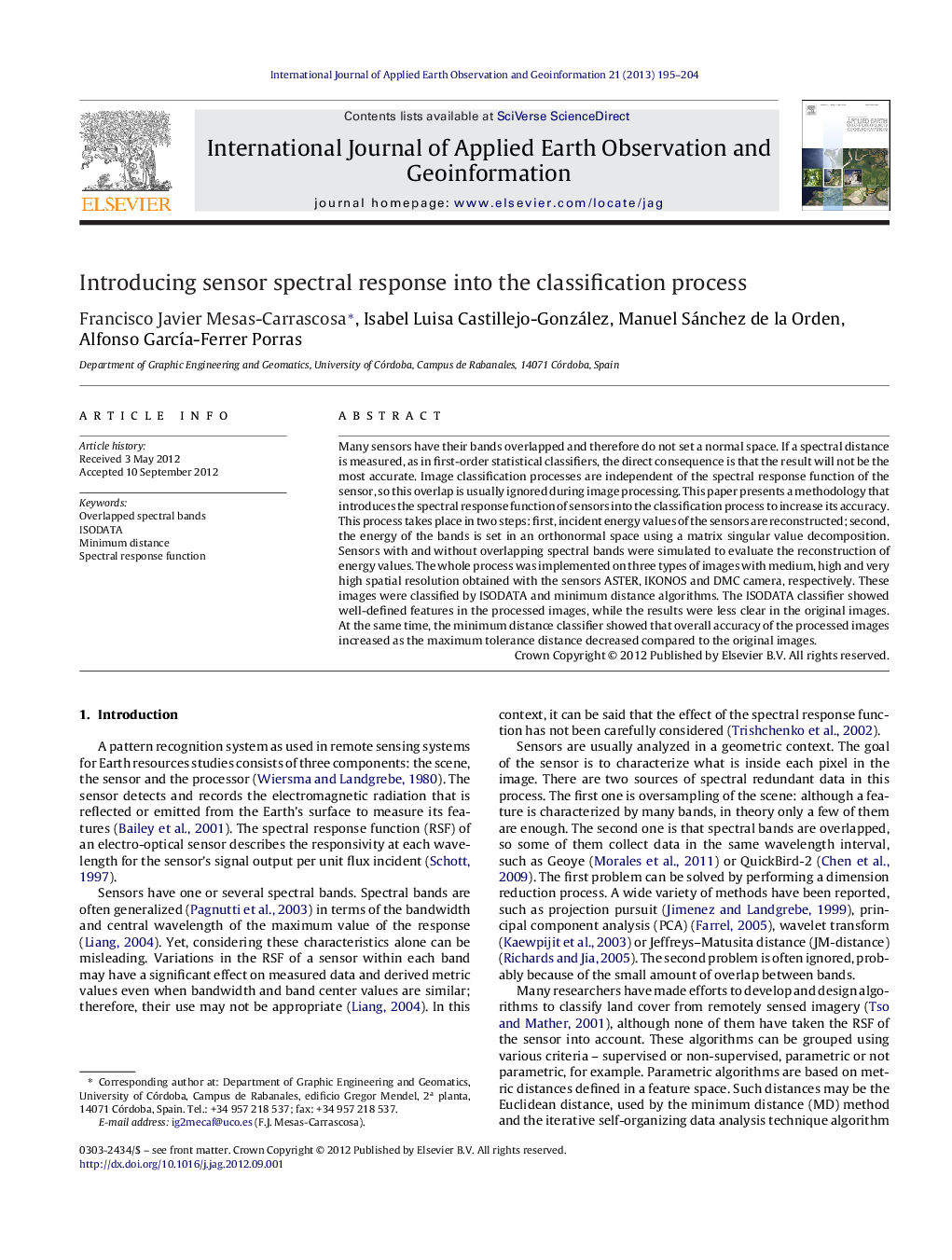| Article ID | Journal | Published Year | Pages | File Type |
|---|---|---|---|---|
| 4464852 | International Journal of Applied Earth Observation and Geoinformation | 2013 | 10 Pages |
Many sensors have their bands overlapped and therefore do not set a normal space. If a spectral distance is measured, as in first-order statistical classifiers, the direct consequence is that the result will not be the most accurate. Image classification processes are independent of the spectral response function of the sensor, so this overlap is usually ignored during image processing. This paper presents a methodology that introduces the spectral response function of sensors into the classification process to increase its accuracy. This process takes place in two steps: first, incident energy values of the sensors are reconstructed; second, the energy of the bands is set in an orthonormal space using a matrix singular value decomposition. Sensors with and without overlapping spectral bands were simulated to evaluate the reconstruction of energy values. The whole process was implemented on three types of images with medium, high and very high spatial resolution obtained with the sensors ASTER, IKONOS and DMC camera, respectively. These images were classified by ISODATA and minimum distance algorithms. The ISODATA classifier showed well-defined features in the processed images, while the results were less clear in the original images. At the same time, the minimum distance classifier showed that overall accuracy of the processed images increased as the maximum tolerance distance decreased compared to the original images.
► Relative spectral responses of multispectral bands are overlapped. ► Overall accuracy improves when relative spectral responses are included in the process. ► Minimum distance and ISODATA classifiers improve their classification results.
